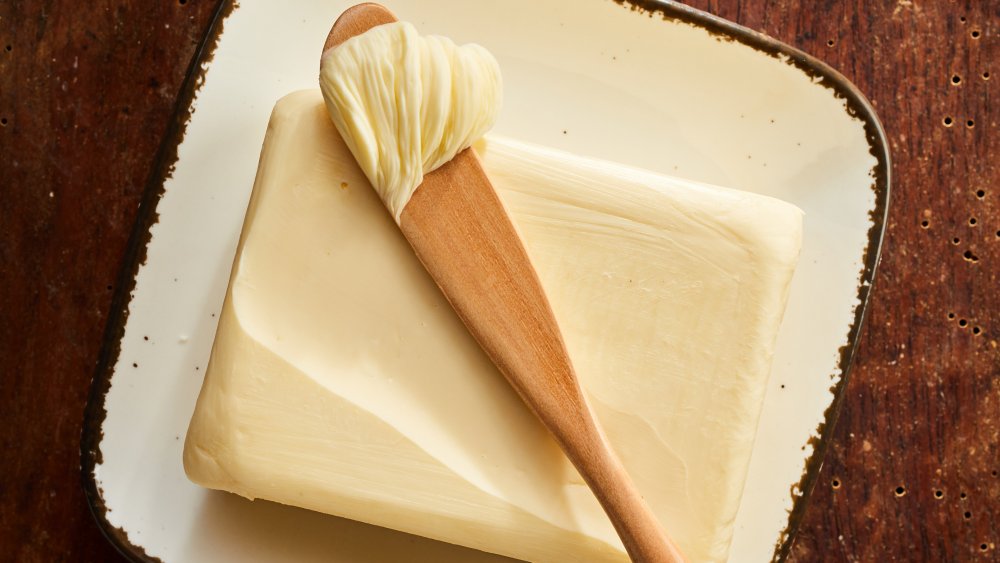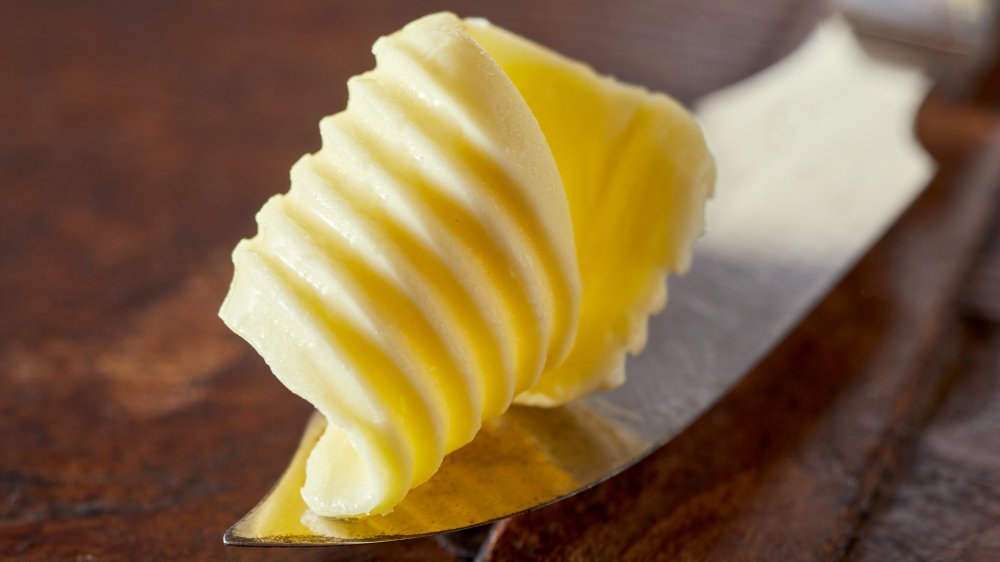The Hidden Meaning Behind The Color Of Butter
In 2017, Jean Smith (who The Daily Beast called a "modern-day bootlegger") made headlines for smuggling bricks of Kerrygold Irish butter from Nebraska to Wisconsin, where the sale of Kerrygold was banned. "It's creamier, it doesn't have any waxy taste and it's a richer yellow," Smith told AP News at the time. Smith's frustration led her and other butter lovers to file a lawsuit, challenging a law dating back to the 1950s which prohibited the sale of non-rated and unlicensed butter, and punished lawbreakers with up to six months jail time and a fine of up to $1,000 dollars.
"Our clients and other Wisconsinites have been forced to travel to other states — often to Illinois — on 'Kerrygold runs' in search of the creamy contraband," wrote The Wisconsin Institute for Law and Liberty (WILL), the law firm that brought the case. To be clear, the lawsuit had nothing to do with the fact that Kerrygold Irish butter is yellow, and everything to do with the fact that it was not graded according to the state's standards. In the following months, Kerrygold initiated the process to have its butter graded, and WILL declared its lawsuit to be moot. By late November 2017, Kerrygold announced that it would be legally appearing on Wisconsin's shop shelves. While resolved, the 2017 lawsuit left many with a burning question. Namely: how is it that the color and texture of Kerrygold was capable of creating such passionate devotees?
What's the real difference between white and yellow butter?
Butter made by US cows is usually fairly white, says Business Insider, because US cows are primarily fed on grain. Irish cows, on the other hand, are grass-fed. It's the yellow-tinted beta carotene present in the grass that cows eat which is carried over to butterfat (via The New York Times). Taste states the higher the fat content of your butter, the lower its water content. In the case of grass-fed butter, the higher the fat content, the yellower it becomes. (It's worth noting that some producers dye their butter yellow to mimic that grass-fed color, for which reason Business Insider recommends that you check your packaging to make sure no extra beta carotene was added to it.)
Per The Washington Post, European butter (or European-style butter) usually contains 82 to 86 percent butterfat, while US butter, according to USDA regulations, only needs to ring in at 80 percent. Kerrygold, says Taste, comes from from grass-fed cow milk and contains 82 percent butterfat, which makes it both yellower and creamier than most American brands. (Cabot, for example, averages 80.6 percent butterfat.) Business Insider states that the high amounts of omega 3 in found in grass — and thus, grass-fed butter — also contributes to a more spreadable product. All of that is probably why Wisconsinite Jean Smith puts a dollop of the stuff into her tea on a daily basis, and undoubtedly why she went to court over it.

